Nature, Wind, and Art in Perfect Harmony at Susumu Shingu WIND MUSEUM
Susumu Shingu WIND MUSEUM is an outdoor museum and permanent exhibition in the recreation zone of Sanda City’s Arimafuji Park.
Here we can see the Satoyama Windmill and 12 other wind-movement sculptures donated to Hyogo Prefecture by Susumu Shingu, the Sanda-based artist known for his creations that move with wind and water.


When I arrived at the Arimafuji Park Recreation Zone, I was greeted by a vast grassy field. Gazing out at the line of distant mountains along the horizon and breathing in the clear air was deeply refreshing. This place makes you want to take a deep breath, lie down on the lawn, and look up at the sky or run around with the exhilaration of a child. A gust of wind blew through the leaves on the trees, making them sway and rustle. As I listened to these whispers, I caught now and then the songs of birds.
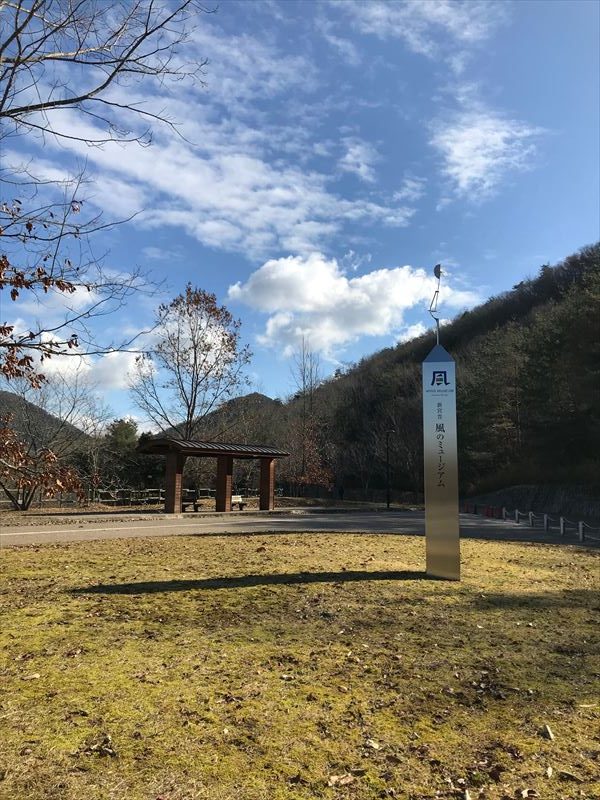

In this large expanse stands the Satoyama Windmill, a symbol of a self-sufficient village powered by natural energy, as envisioned by Shingu’s “Breathing Earth” concept. The windmill generates electricity and lights on the hut illuminate the structure at night. The vivid yellow and white windmill was very impressive.

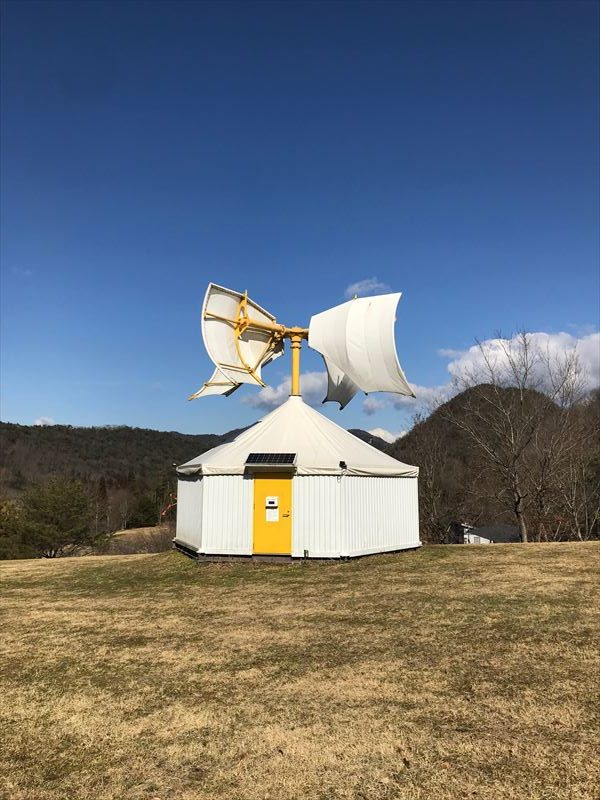
Walking on from the Satoyama Windmill, 11 other moving sculptures come into view. Watching these creations dance gracefully in the wind, we feel the invisible rhythm of nature. Depending on the strength of the wind, the appearance of the sculptures changed in fascinating ways.
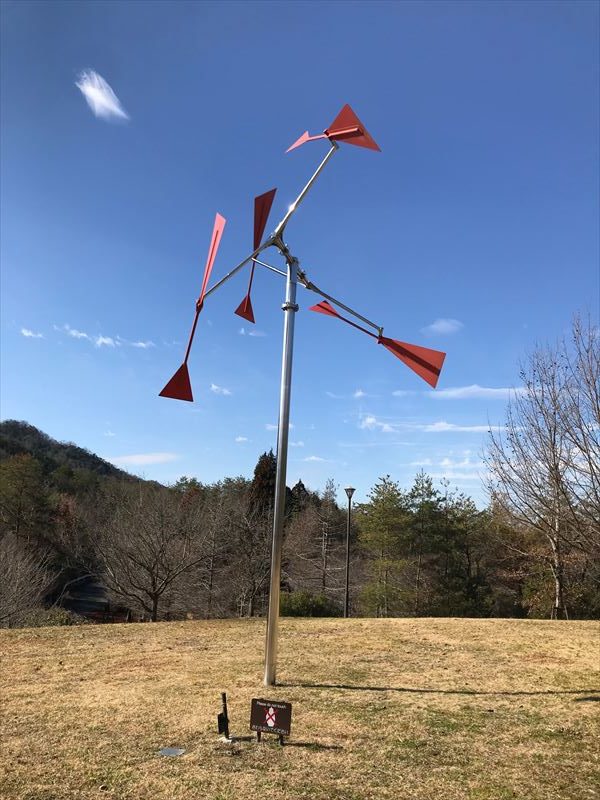
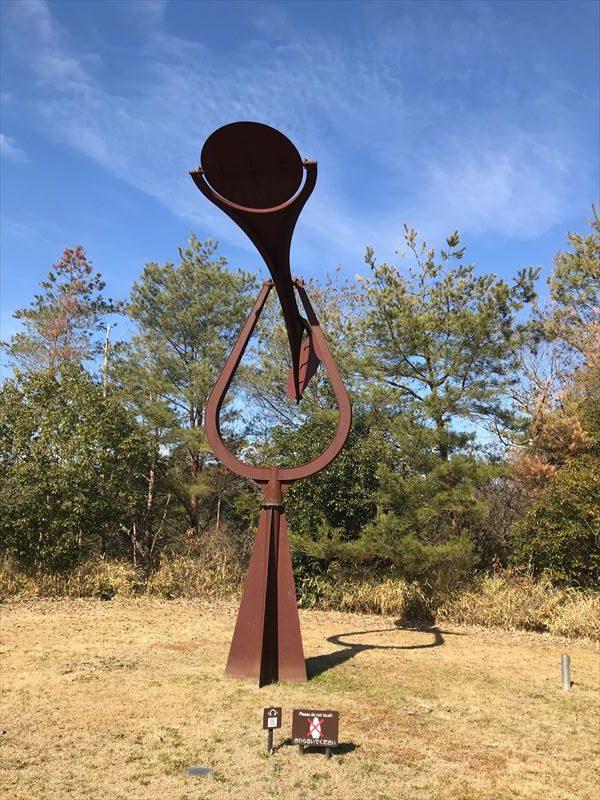
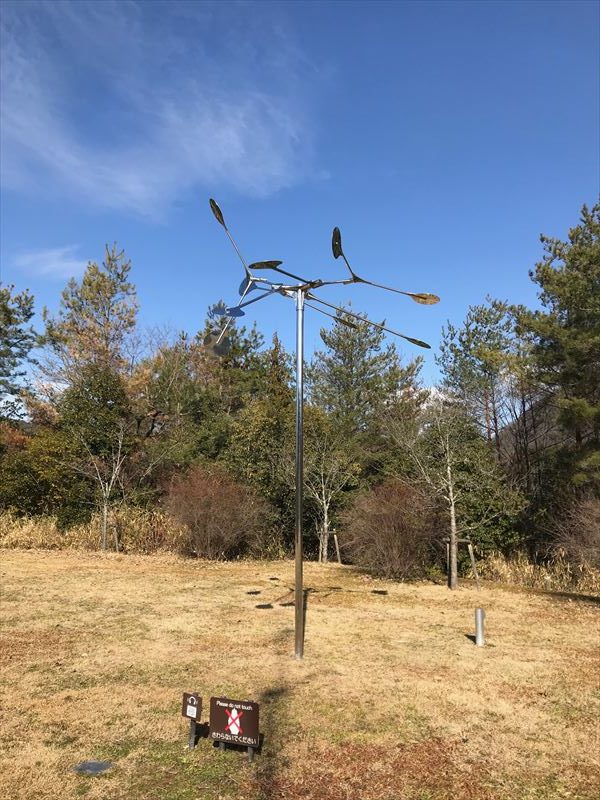
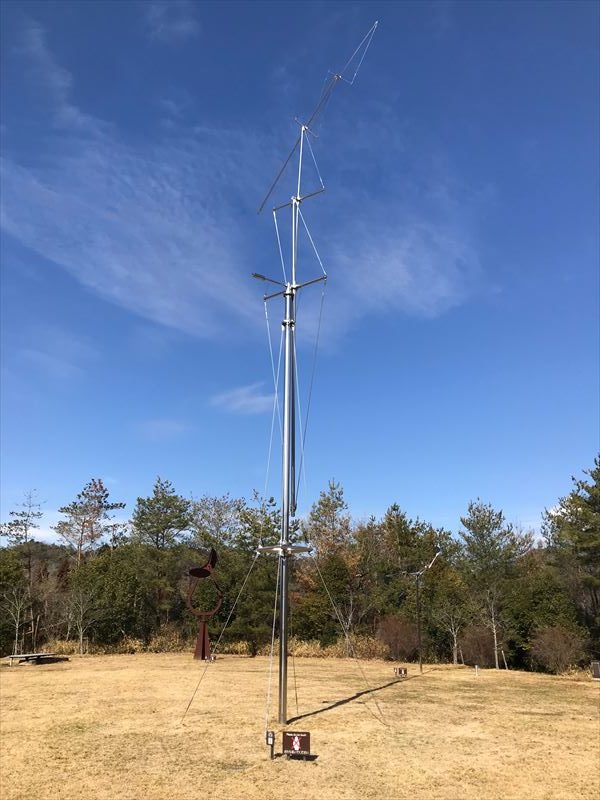
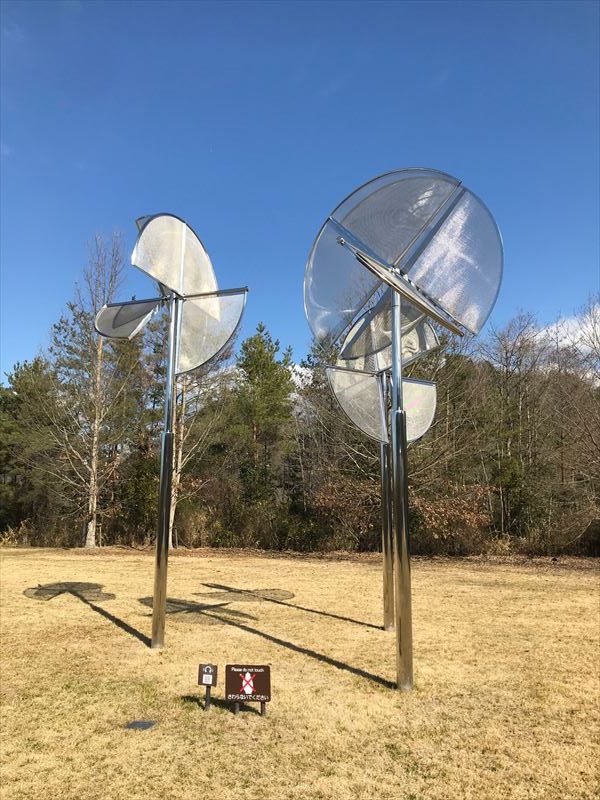
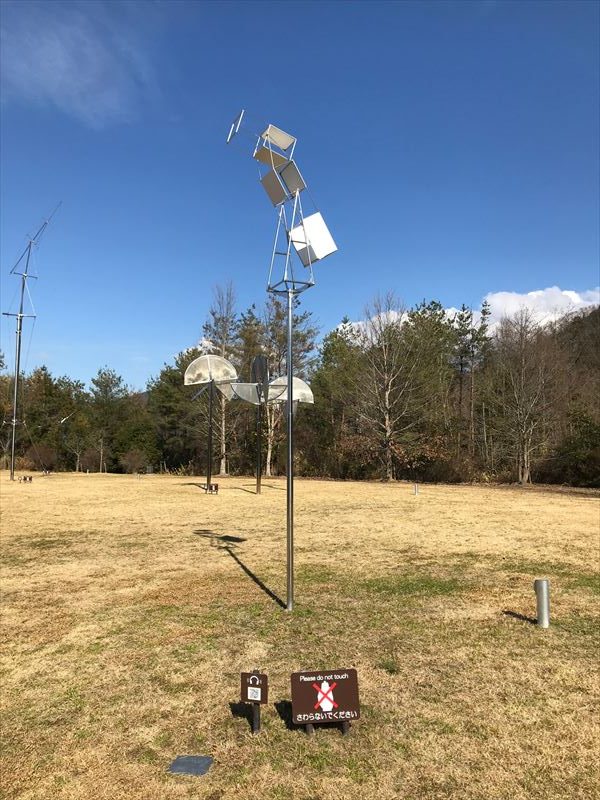
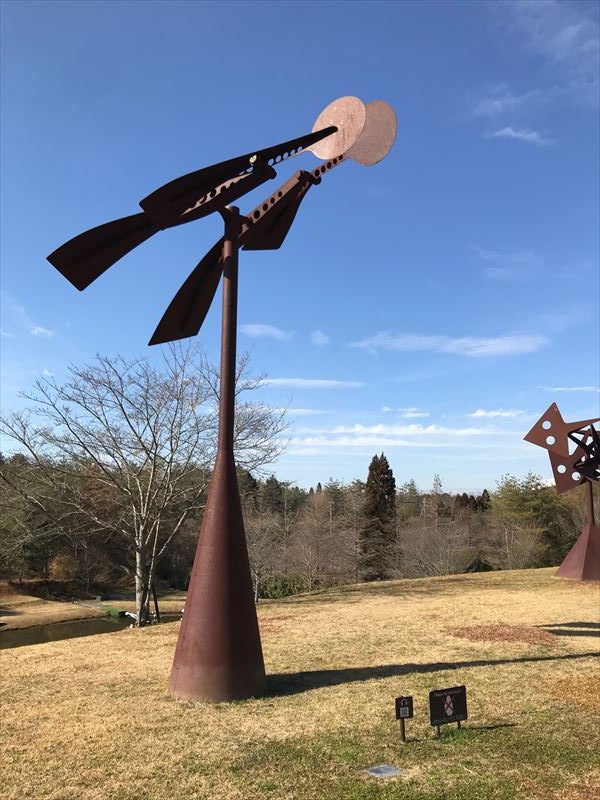
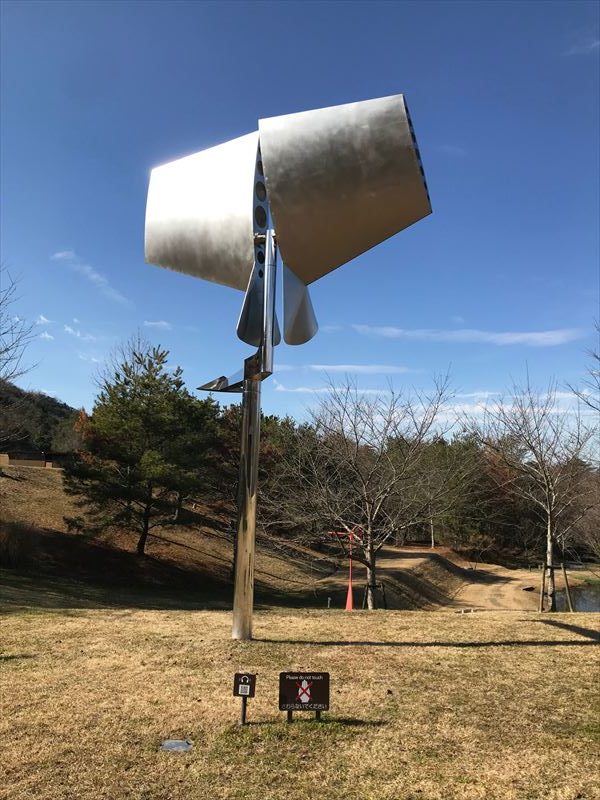
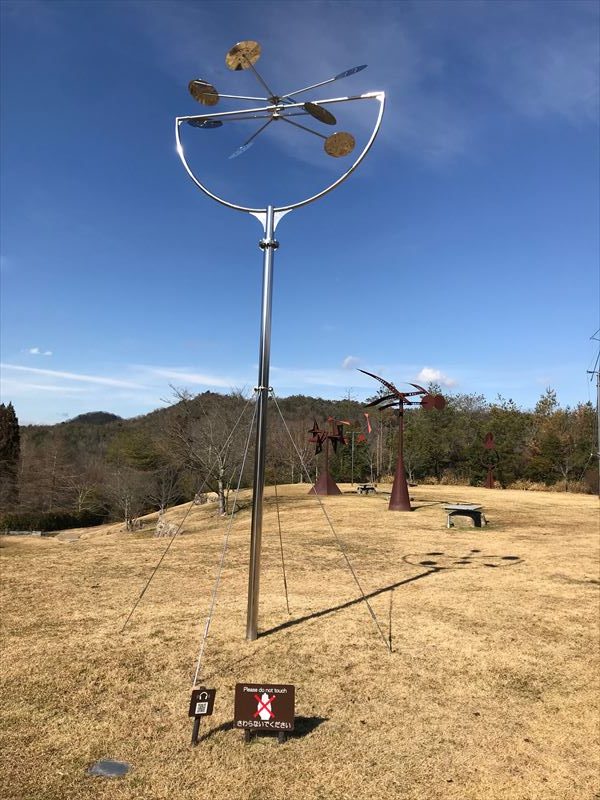
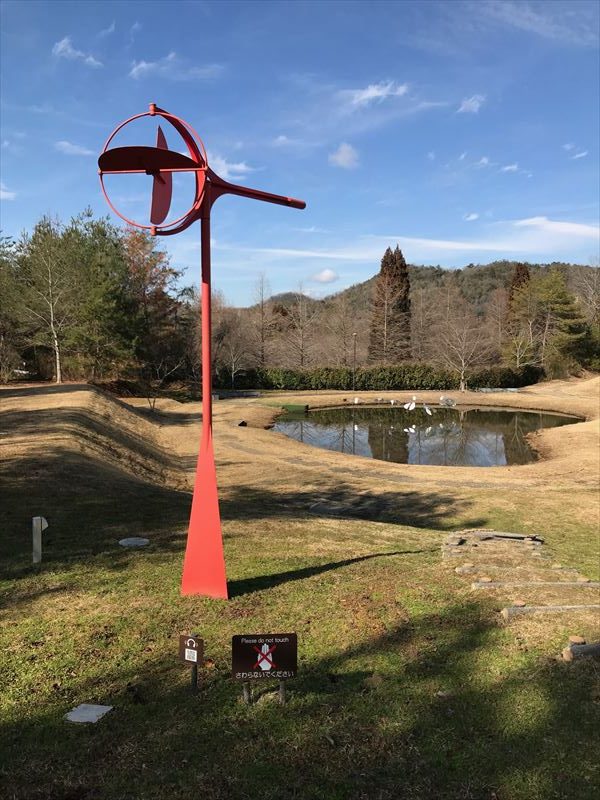
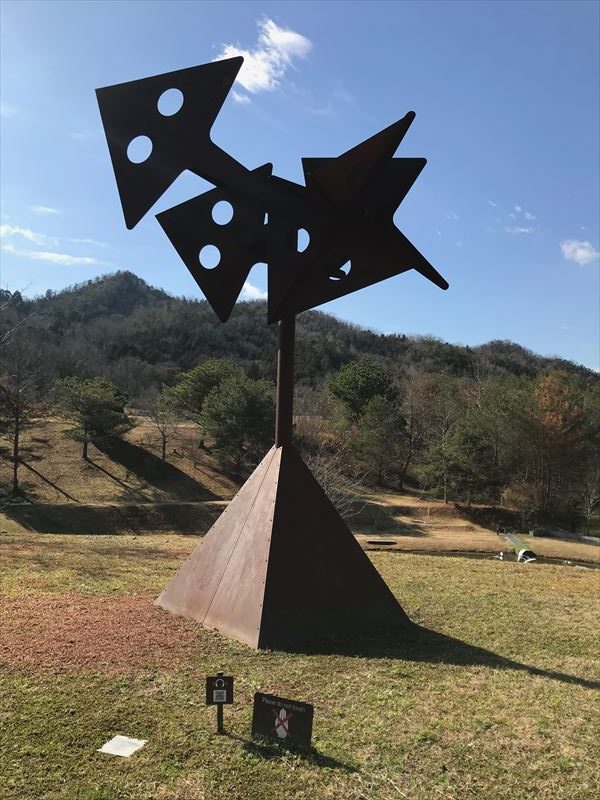
Farther on, we meet the sculpture “Rondo of the Wind” in the pond. The shapes seemed as if birds were really about to take flight into the sky. After scanning the 2-dimensional code in front of each sculpture with my smartphone, information about the work was displayed.

To this point, our leisurely exploration had taken about 45 minutes. The wide-open natural space is also conveniently equipped with restrooms and vending machines. A path leads you along an enjoyable course through the Susumu Shingu WIND MUSEUM and surrounding environment. It’s worth visiting the site in person to directly feel the unique pleasures offered by this fusion of nature and art!

【Note】
Susumu Shingu was born in Osaka in 1937. After graduating from Tokyo University of the Arts, he studied abroad in Italy. During his six-year stay, his focus shifted to sculpture and he began creating works that move with the wind.
Since then, he has continued to work all over the world creating kinetic sculpture powered by natural energy.
The journey from JR Osaka Station to JR Sanda Station takes about 40 minutes by train. From the north exit of Sanda Station, the museum is roughly 12 minutes by bus, then about 15 minutes’ walk from there. Since few buses run each day, please be sure to check the bus schedule in advance. A taxi from Sanda Station takes about 15 minutes. For a smooth journey, stop by the Sanda City General Information Center at the south exit of the station for guidance on how to get there as well as other nearby sightseeing spots.
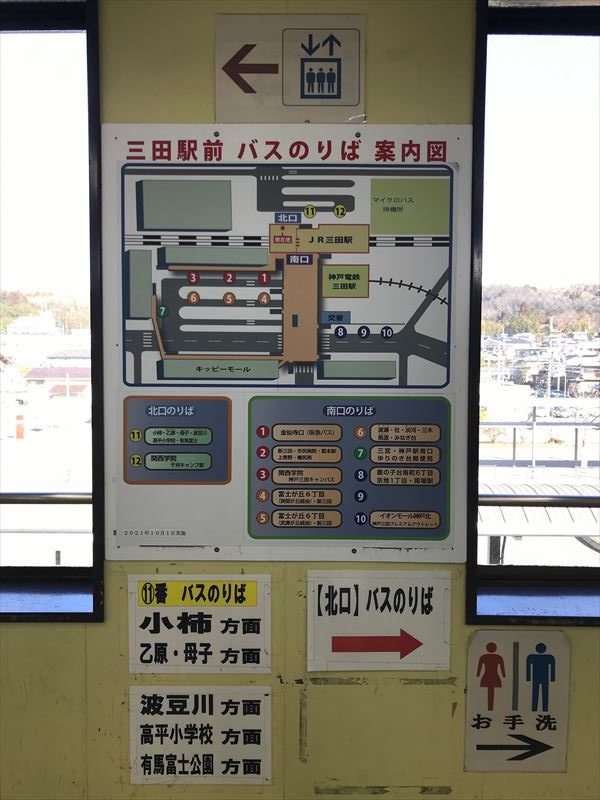
Susumu Shingu WIND MUSEUM
Opening hours: 9:00 to 17:00 (closed from December 29 to January 3)
Admission: Free
Address: 968 Ninji, Sanda City, next to Arimafuji Kyosei Center
TEL: 079-562-3040
Access: From JR Sanda Station, take the Shinki Bus to Ninji stop and walk about 15 minutes.
HP: http://windmuseum.jp/
【For related articles】
For more on what Sanda City has to offer, check here!
Discover the Beauty of Sanda City with the Sanda Tourism Guides
https://visithanshin.jp/enews/2497/
Rare quasi-Western Architecture at the Former Kuki Family Residence Museum in Sanda City
https://visithanshin.jp/enews/2493/
A glass-blowing experience in the lush green hills around Sanda Glass Art Center!
https://visithanshin.jp/enews/2371/
For other great spots in Sanda City♪
https://visithanshin.jp/en/area/sanda/
 2023/03/29
2023/03/29- Takarazuka: A City of Dreams Come True























